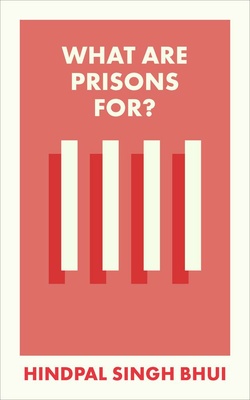When I started working in a prison, one of the first things to hit me was the noise. There was a constant clang of prison gates and cell doors, and conversations and confrontations echoed through the landings.
As the sounds of prison life became increasingly familiar, I noticed more about the prisoners themselves. Some were clearly under the influence of drugs and many were visibly physically or mentally unwell. A high proportion were Black. Many were also foreign nationals, often held without time limit beyond the end of their criminal sentence by the immigration authorities and desperate for information and legal help. A very high percentage of prisoners have low literacy levels, neurodiverse needs and disrupted family and educational histories. There are multiple causes for these disproportions, and they include discrimination, ill-health and structural disadvantage.
Noting these patterns is not to deny the importance of individual agency and the power that people have to make choices, nor does it mean that prisons perform no useful function. But it does suggest that prison is not simply a means of punishing, deterring and reforming people who harm others or break society’s rules, even though it may also do these things to varying extents. Throughout history, the prison has tended to be a particular presence/focus in certain groups of people,, and to understand it properly, it is important to ask, first, ‘who is in prison?’ and then ‘why them?’. We can’t start to address these questions without an open-minded exploration of history and the politics of imprisonment.
In this great age of incarceration, we hold around 11.5 million people in the world’s prisons and the most enthusiastic incarcerator, the United States, accounts for 1.8 million of them. Much of the US hunger for imprisonment has been satisfied by the grossly disproportionate confinement of Black Americans, who comprise nearly 40 per cent of its prisoners. Some scholars have even suggested that the US penal system is in fact a sophisticated form of racialised control, which functions in a similar way to the legally enforced discrimination of the ‘Jim Crow’ segregation laws. There is indeed considerable evidence that US prisons played an important role in replacing slavery as a key means of controlling the labour and lives of Black people following its abolition. There is certainly a profound symbolism in former slave plantations being repurposed as prisons and disproportionately filled with Black people serving life sentences. Perhaps the most famous example is Louisiana State Penitentiary, a vast maximum-security prison with a brutal history of prisoner mistreatment, which is still commonly referred to as ‘Angola’, a name it acquired to reflect the national origin of many of the slaves who were forced to work on the plantation. While it is relatively easy to draw a line between slavery and imprisonment in the US, minority ethnic groups and foreign nationals are disproportionately imprisoned throughout the western world. For example, in England and Wales Black men are even more disproportionately imprisoned than in the US, raising important questions about the practice of imprisonment, which have complex answers.
Perhaps the most important question about prison is ‘what is it for?’ The purposes of prison are usually described as: punishment, deterrence, incapacitation and rehabilitation, and all are intended to help create a safer society by stopping crime. While the emphasis differs that governments around the world place on each of these goals, they are remarkably ubiquitous, and enormous sums of money are spent to achieve them. And yet, only one of these target outcomes is consistently reached: punishment. The prison temporarily incapacitates people but has a remarkably tenuous link to long-term crime reduction and there is paltry evidence that it can rehabilitate or deter.
It is clear that prison has been, and continues to be, used to exercise social control, and not just over people who are causing or threating harm to society. History tells us that the world’s prisons have had many functions, including economic development, nation-building, supporting colonial conquest and control of political opponents. It is a tremendously malleable manifestation of state power, capable of inflicting substantial pain on individuals and communities. Given the power prison exercises on our behalf, it is essential to look beyond common statements of purpose to understand the broader functions of the prison in our societies.
Dr Hindpal Singh Bhui OBE is an Inspection Team Leader at HM Inspectorate of Prisons and a Visiting Law Professor at the Centre for Criminology, University of Oxford. He has worked in prisons for over 25 years undertaking hundreds of visits to places of detention around the world.
 What Are Prisons For? By Hindpal Singh Bhui is available on the Bristol University Press website. Order here for £8.99.
What Are Prisons For? By Hindpal Singh Bhui is available on the Bristol University Press website. Order here for £8.99.
Bristol University Press/Policy Press newsletter subscribers receive a 25% discount – sign up here.
Follow Transforming Society so we can let you know when new articles publish.
The views and opinions expressed on this blog site are solely those of the original blog post authors and other contributors. These views and opinions do not necessarily represent those of the Policy Press and/or any/all contributors to this site.
Image Tom Blackout vs Unsplash


